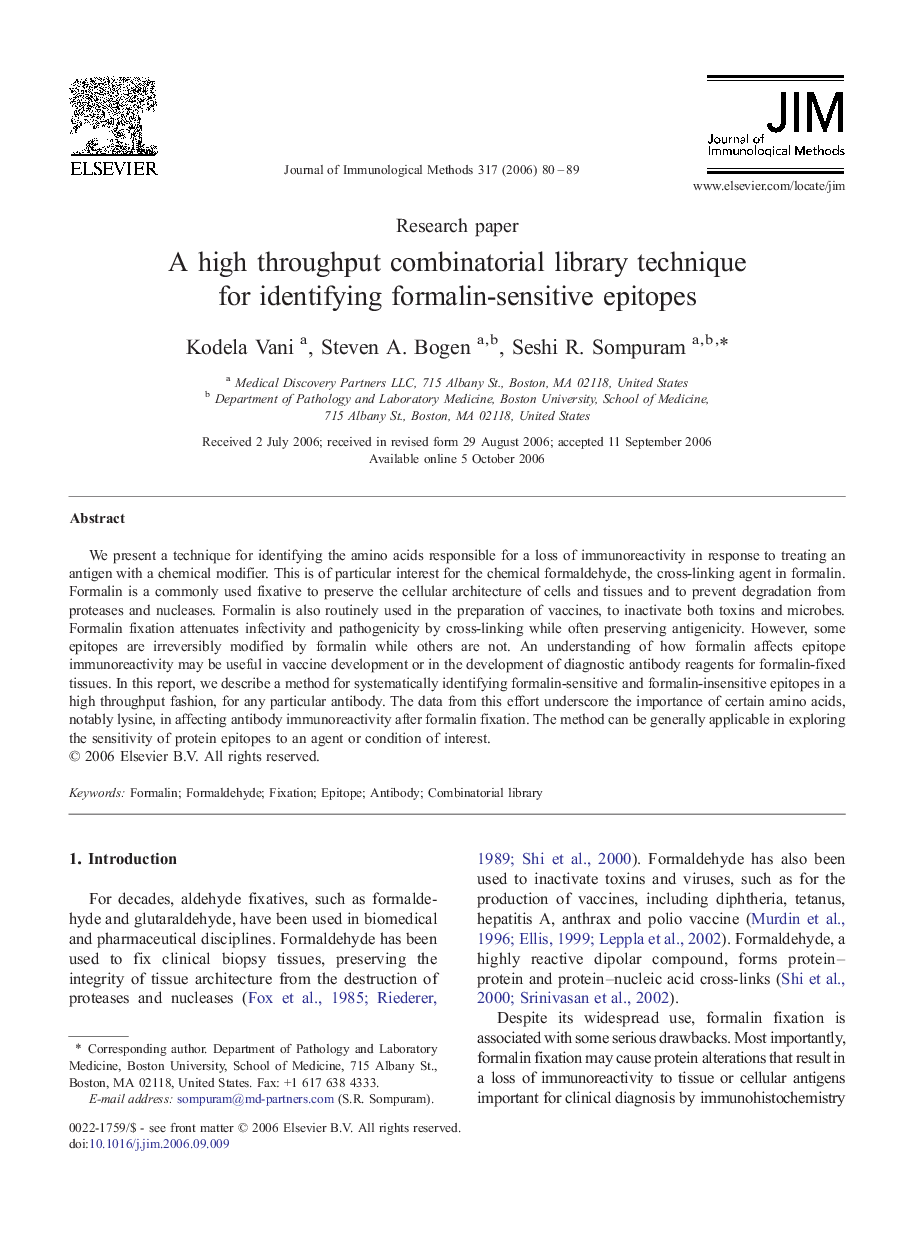| Article ID | Journal | Published Year | Pages | File Type |
|---|---|---|---|---|
| 2089266 | Journal of Immunological Methods | 2006 | 10 Pages |
We present a technique for identifying the amino acids responsible for a loss of immunoreactivity in response to treating an antigen with a chemical modifier. This is of particular interest for the chemical formaldehyde, the cross-linking agent in formalin. Formalin is a commonly used fixative to preserve the cellular architecture of cells and tissues and to prevent degradation from proteases and nucleases. Formalin is also routinely used in the preparation of vaccines, to inactivate both toxins and microbes. Formalin fixation attenuates infectivity and pathogenicity by cross-linking while often preserving antigenicity. However, some epitopes are irreversibly modified by formalin while others are not. An understanding of how formalin affects epitope immunoreactivity may be useful in vaccine development or in the development of diagnostic antibody reagents for formalin-fixed tissues. In this report, we describe a method for systematically identifying formalin-sensitive and formalin-insensitive epitopes in a high throughput fashion, for any particular antibody. The data from this effort underscore the importance of certain amino acids, notably lysine, in affecting antibody immunoreactivity after formalin fixation. The method can be generally applicable in exploring the sensitivity of protein epitopes to an agent or condition of interest.
